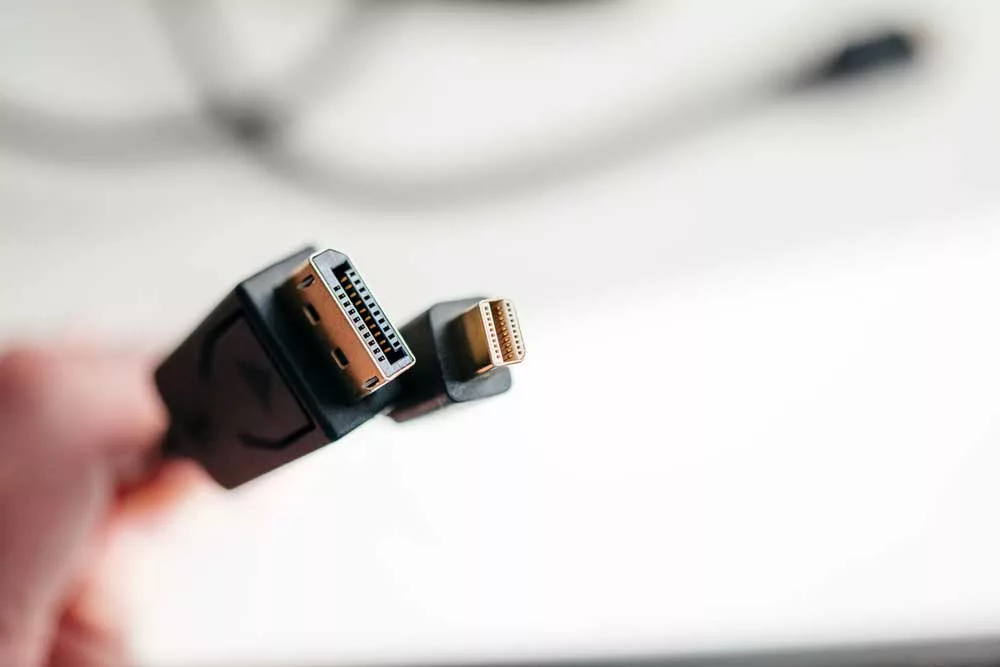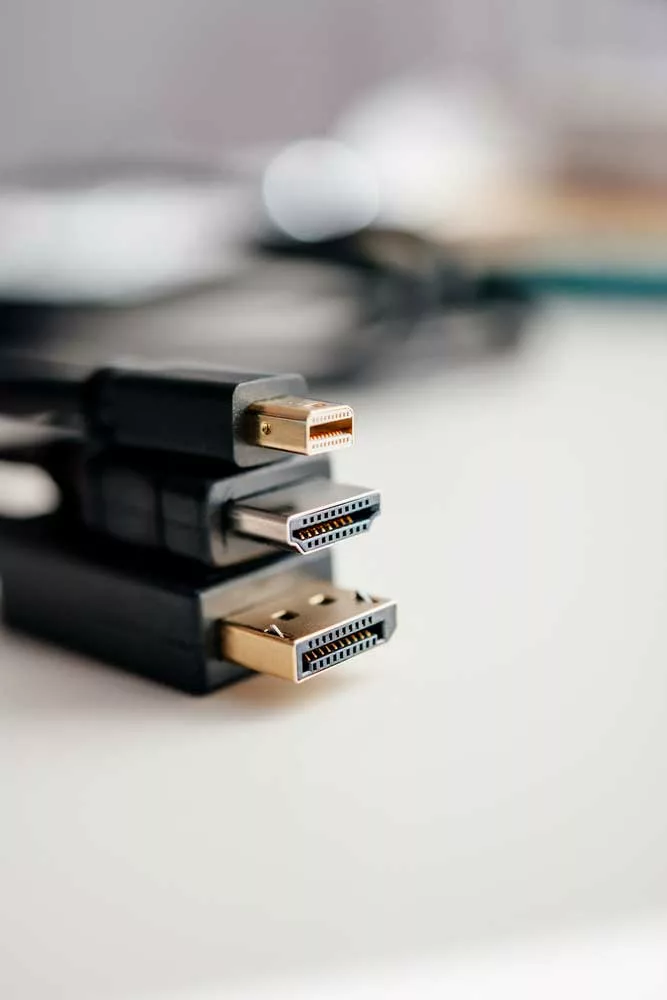About HDMI cable for Samsung TV, HDMI cables allow you to enjoy the experience of viewing high-quality pictures.
And every TV model has at least two HDMI ports to allow you to connect your devices.
More importantly, if you have more than one device, you can connect them all using an HDMI switch.
This article discusses all there is to know about the HDMI cable for Samsung TVs.
Table of Contents
- Number of Ports on a Samsung TV
- Types of HDMI Ports You’ll Find on a Samsung TV
- Which HDMI Port Should I Use?
- How to Determine if Your HDMI Supports 4K
- HDMI Cables to Use With a Samsung TV
- Can You Increase the Number of Ports in Samsung TV?
- Can You Control the TV and HDMI Devices Using a Single Remote?
- Samsung TV HDMI Port Issues and How to Troubleshoot
- Conclusion
Number of Ports on a Samsung TV
Generally, different Samsung TV models have a different number of ports (up to four).
However, as a rule of thumb, Samsung manufacturers ensure that each TV has at least two HDMI ports.
One of these ports is a standard HDMI port, while the other is either a HDMI ARC (Audio Return Channel) or HDMI eARC (Enhanced Audio Return Channel).
Both the ARC and eARC have improved bandwidth and speed.
To identify the number of ports, simply check the back of the TV for ports labeled HDMI.
Usually, you’ll find these ports on the I/O panel, which all Samsungs have. And the HDMI version will vary depending on the series of the TV.

I/O panel of TV
Thus, it’s essential to ensure that the Samsung TV you purchase has sufficient HDMI ports to fit your needs.
And more importantly, make sure that the ports work well with the devices you intend to connect to your TV.
Types of HDMI Ports You’ll Find on a Samsung TV

Examples of HDMI port types
Regardless of what Samsung TV model you have, it will have a combination of either of the following HDMI ports at the back:
HDMI 2.0
Usually, you’ll find this type of HDMI port on models manufactured before 2019.
With this port, you can plug in any device that does not receive an audio signal from your TV.
Some examples of devices with a 2.0 port include laptops, gaming consoles, Blu-ray players, and streaming devices.
Note, though, that although you can use the 2.0 port with 4K devices, the port only supports a resolution of up to 1440p.
That means you may not enjoy high-quality pictures as you would with other ports.
HDMI 2.1
If the year of manufacture of your TV model is some time after 2019, then it uses an HDMI 2.1.
Some examples of models you’ll likely find this type of HDMI are the Q90R, TU8000, Q950T, AU800, Q70A, and QN90A.
Undoubtedly, all versions of 2022 and 2023 Samsung Smart TV models have this port.
Unlike the 2.0, the 2.1 supports a higher refresh rate and better resolution. Also, it can handle more bytes per second.
This port has proved to be an excellent choice for gaming, primarily due to its low latency mode and quick frame transport.
HDMI ARC
ARC here denotes Audio Return Channel. And as the name implies, HDMI ARC ports support audio signals.
For this reason, this HDMI works well with Dolby Digital Surround Sound, particularly the 5.1, delivering sound with five channels to add depth and realism.
Also, the HDMI ARC works with DTS (Digital Theater Sound).
Also, the HDMI ARC works well with external speakers and soundbars. Nearly any high-quality HDMI cable that supports an HDMI of 1.4 or higher version will work well with the port.
HDMI eARC
This port has functions like those of the previously mentioned HDMI ARC. Only it’s more advanced with higher bandwidth to offer superior sound quality.
Some TVs where you’ll see this type of HDMI port include the 2020T, 2021A, 2022B, and 2023C series.
Note, though, that to use this port, you must have an HDMI cable that’s ethernet-enabled.
Also, the TV must have a special functionality known as Anynet+ (HDMI-CEC). That means it can control multiple devices (as many as 12) and up to three of a similar kind.
Which HDMI Port Should I Use?
The type of HDMI port to use will depend on the device to which you connect.
For example, if it’s a streaming device, then both the 2.0 and 2.1 HDMI ports are excellent options.
But for devices such as laptops, you’ll find it works with a 2.0 or 2.1 HDMI port.
Additionally, if you want a 4K resolution picture quality, this is only possible using the 2.1 HDMI port.
Therefore, it’s important to ensure that the HDMI cable and TV port are compatible with your devices.
How to Determine if Your HDMI Supports 4K
To determine whether or not your Samsung TV supports 4K pictures, check the label on your HDMI ports.
For example, if you have a 4K or 8K TV, its ports surely support 4K picture quality.
Sometimes, manufacturers use other terms to denote 4K UHD playback. So they’ll label the TV with terms like 10-bit, UHD, 4K@3HZ, and sometimes 4K@60Hz.
The same applies to the HDMI cable you’ll need to connect the devices to your TV.
Remember, you can find very helpful information regarding the quality of pictures that the HDMI port can support in the TV manufacturer’s manual.
Also, if you have a user guide booklet, a Samsung Support website provides such information.
HDMI Cables to Use With a Samsung TV

Different HDMI cable types
Generally, many of the different HDMI cables on the market work with Samsung HDMI ports.
The only exception is the eARC port, which requires an ethernet cable to work well with the TV.
With such a cable, you’re guaranteed more stability as it’s faster, and the chances of interference are much reduced.
That said, before purchasing an HDMI cable, ensure it supports the video resolution and refresh rate you need.
If you have a 4K TV, purchase a 4K cable.
And rather than focus on the price tag, go for quality.
But with that said, it’s not guaranteed that an overpriced HDMI cable is of superior quality to a medium-priced one.
In fact, in many cases, some brands have exaggerated prices.
The important thing to note is that all HDMI cables compliant with your TV will have the same performance capabilities, regardless of their brand.
Can You Increase the Number of Ports in Samsung TV?
Yes, you can. But you must have an HDMI switch as it acts as a plug-in strip.
To add more ports, do the following:
- First, simply plug one end of the switch into the TV port.
- Then, connect HDMI cables to the HDMI output ports on the devices you intend to connect to the TV.
- Next, plug each of the HDMI cables running from the devices into the outlet HDMI ports on the switch.
As you can see, the switch acts as a splitter, allowing you to connect several devices to your TV all at once.
However, note that while the HDMI switch enables such a connection, it tends to reduce audio and visual quality, and you might find that you’re better off not using the device.
Also, the switch may not work for all devices.
Can You Control the TV and HDMI Devices Using a Single Remote?
Yes, you can. See, many Samsung TVs have ports with Anynet+ (HDMI-CEC) functionality.
And this feature allows you to control all the devices connected to your TV’s HDMI ports.
You’ll need to change the TV settings to enable this. To do that,
- First, go to the Home button on your TV remote and open Settings.
- Then under the Settings options, select General, then Connection options.
- Next, navigate and then select External Device Manager.
- Here, you’ll see the option to turn on the Anynet+ (HDMI-CEC). Press on it to turn on the option, and you should now have control of all the devices connected to your Samsung TV.
Samsung TV HDMI Port Issues and How to Troubleshoot
Sometimes, when you connect a device to your TV, you’ll run into issues such as:
- No signal so that the TV does not detect the device.
- A compromised video with flickering or low resolution.
- Compromised audio that’s unclear.
- Problems with audio-video sync.
In case you run into any of these problems, here’s how to troubleshoot them:
- First, try to reconnect the HDMI cable to your TV.
- Alternatively, you could change the connection to a different port.
- Check that your device is on and connected correctly. For example, if it’s a laptop you’ve connected, confirm that it’s powered on and not in Sleep or Hibernate.
- Try restarting your TV. Also, ensure that the connections are firm enough.
- To ascertain whether or not the issue lies with the TV port, connect a different device to the TV. If the device you connect to works, the issue is not the TV port. But if it doesn’t work, then it’s the port that’s faulty.
- Ensure that you have selected the correct source on your TV. For instance, if you have connected your TV to HDMI 1, then ensure that you select that particular HDMI input to access the connected device.
However, if you’ve tried all the above and the problem persists, you may need professional assistance or contact the manufacturer.
Conclusion
The HDMI cable for Samsung TV is essential for enjoying high-quality pictures. Now you know the number and type of ports there are.
Also, you know the exact HDMI port you should use and what cables to use on it.
And if you run into any issues with the ports, you know exactly how to solve the problem.
